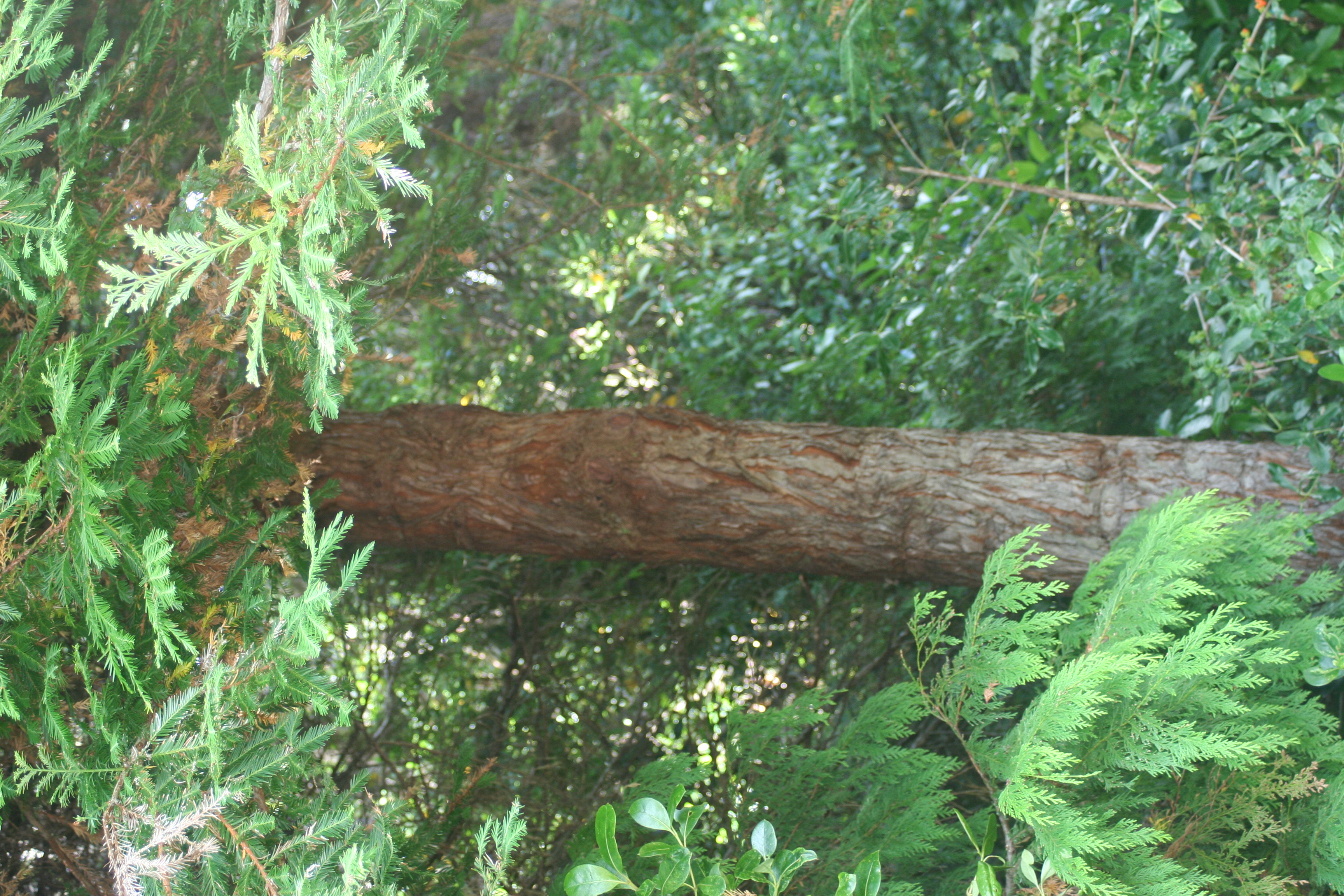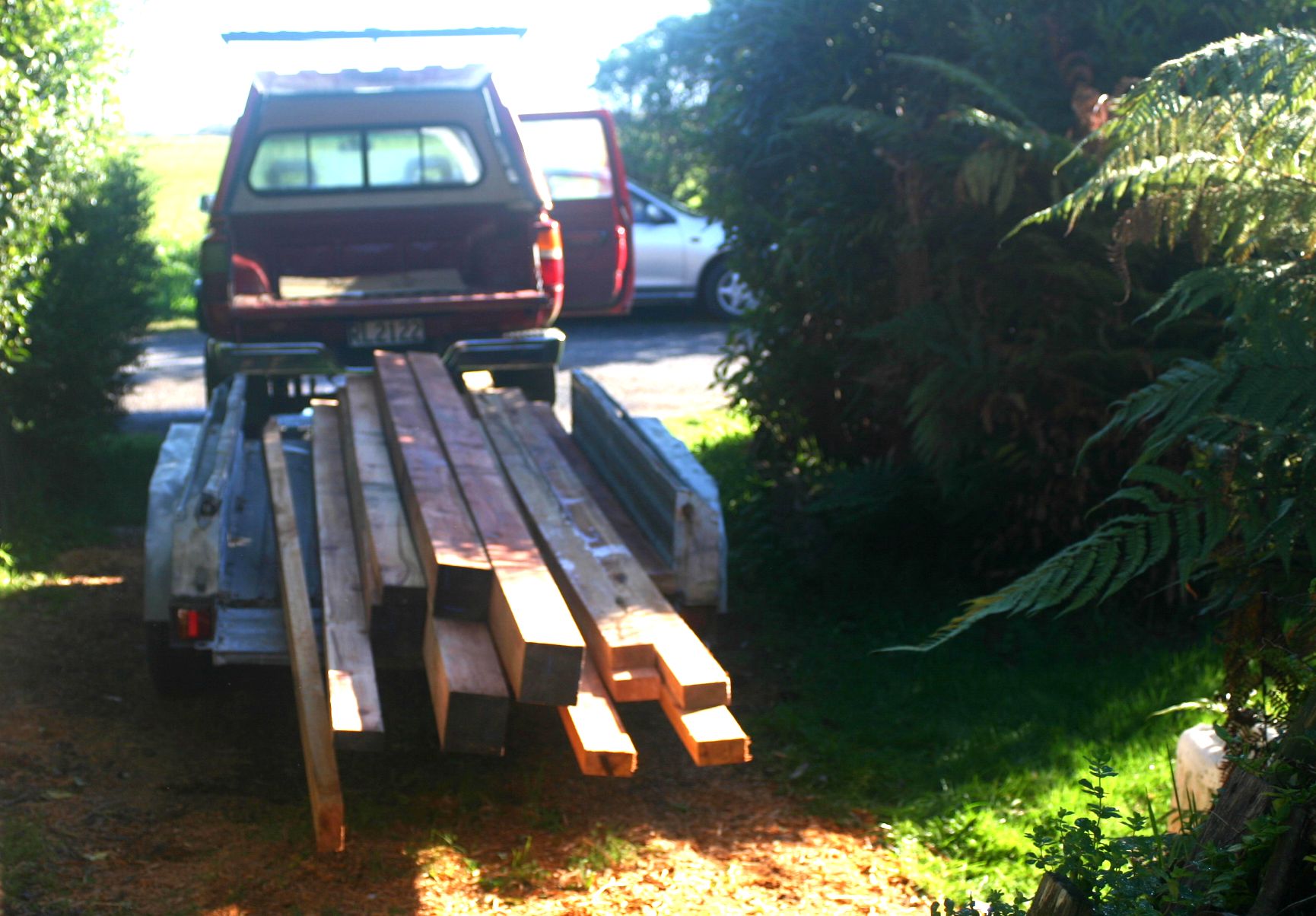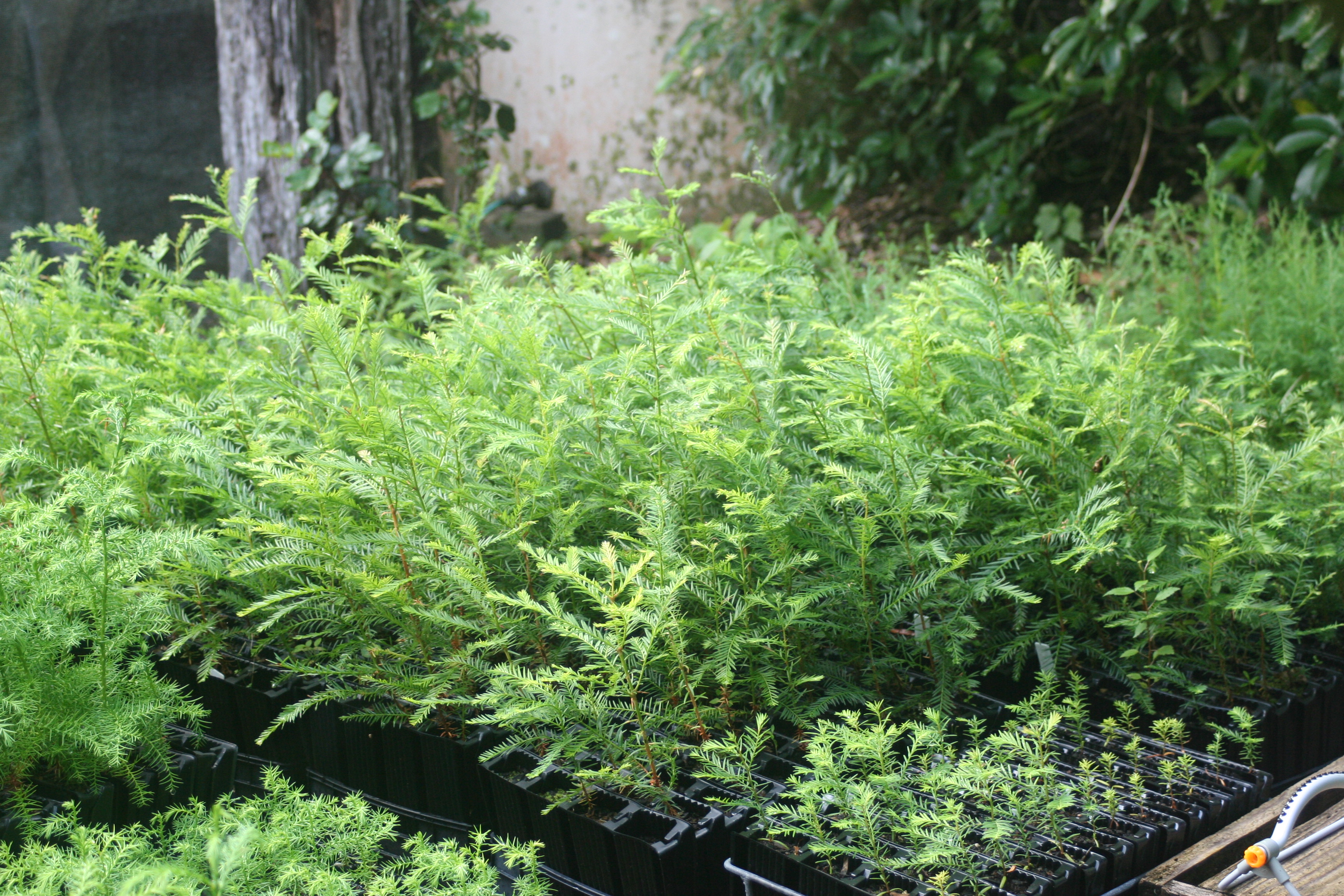
Surely if we believe the hype, then the world-saving, fluffy panda, helpful, smiling redwoods can lock up extra carbon at a great rate, and help slow the increase in gases that warm the atmosphere. They can stop the extra wild weather and rainfall in its tracks! And we can still burn coal at the same time!
Yay!
It's best to start with the facts. Redwood timber is similar to radiata although it takes longer to grow. From the point of view of "carbon farming" though, this longer growth time is an advantage because more carbon is removed from the atmosphere over a longer period. Hence all the flurry in the farming news about carbon credits.
Carbon forestry subsidised by the carbon market is supposed to be a mechanism to encourage tree cover, and therefore the antidote or compensation for fossil fuel burning elsewhere. Whether this works or not is debateable. The carbon market is far from perfect and can be an excuse for large corporations to avoid reducing fossil fuel use. This is known as "greenwash". Being "Carbon Neutral" can be a red flag for "continuing to ravage the planet".
But the Emissions payout! The money! Yet, isn't just planting trees to get a payout for planting them...pointless? We need to have an end use in sight, and that is the timber. Use the wood they produce in a perpetual harvest cycle and a mix with other woods. Above all forestry should aim at producing timber. The bad old carbon is locked away in the wood and then into buildings, decking and barbecue furniture,and only released if the wood is burnt. All these wooden products lock up carbon and the felled trees are busy growing back from the stumps. Problems with collapsing mountainsides after tree harvests? Fell smaller areas of trees that keep their root mat woven along the hillside and sprout back without replanting. All we need to do is harvest them at a good log size after say, fifty years, and they grow back as small trees again. This allows light and other species to thrive in the mixed forest, and prevents erosion by leaving the living root mass in the soil. These practical considerations are good enough reasons alone to plant redwoods. But the real clincher is in the wood itself and its high quality for our future economic prospects, for our future jobs and rural communities.

Sequoia is indeed one of the superheroes of wood! Fire retardant and weather resistant, it is straight grained, strong and light, with a deep colour finish. It is very stable as it dries so keeps its shape well like cedar. Most of the US cities, certainly those in The West, were built with redwood until it ran out, and the reason for the high demand was because of its fine, desirable qualities. Like cedar but with a deeper colour. A good quality softwood.
So whatever you believe about carbon markets, or the evils of big business and monocultures, we must not lose sight of the true advantage of these things. They are real growing things, genuine material assets that increase in size and value.They produce a useful raw material, actual wood, within a lifetime. This is why they are grown, this is why they are dependable, and this is why banks and pension funds invest in long term forestry, because it always gives a return on the timber over the long term. Forestry is a blue chip investment: low risk, designed, and guaranteed to yield at least six per cent annually – a reasonable rate – over a twenty or thirty year cycle. Real things that grow big and make wood are worth having. They increase what we have to sell and trade for export. Wood boosts the local supply of material for value added manufacture, such as prefab buidings, plywood, and other specialist items like decking and flooring. The value added wood, grown after fifty years, employs people, creates new exports and jobs, buildings and craft furniture. Real, actual stuff to make things with. Grown out of good soil, rain and sunshine.
So never mind the Emissions Trading. Carbon credits come and go. Grow them for their wood!

We grow fruit and timber trees in the extreme climate of the South Island. Explore our mail order nursery for organic fruit and forestry trees.
Back to dialatree - and tree blog archive - www.dialatree.co.nz